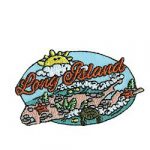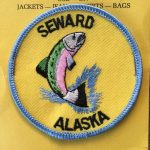In regular school, people have parent teacher conferences, where the teachers fall the parents all about how were doing. Our teachers believe that the only people who can tell our story is us. So, we have 2 ‘student lead conferences’, or SLCs, throughout the year. At the end of every year, we have the Transitional Presentation of Learning. It’s absolutely terrifying, so yeah!
Question 1- What skills did you use and what skills do you want to continue to develop?
To answer this question, I wanted to choose an example from Maker. To be more specific, Destination Imagination.
 I honestly don’t think I learned more from a project than this one. A lot of that was due to our group, though. We worked really well together, and I think that totally contributed to our success. But that doesn’t mean we didn’t have any hiccups along the way. We had so much to revise after our first performance. We almost redid everything. But it was a building block.
I honestly don’t think I learned more from a project than this one. A lot of that was due to our group, though. We worked really well together, and I think that totally contributed to our success. But that doesn’t mean we didn’t have any hiccups along the way. We had so much to revise after our first performance. We almost redid everything. But it was a building block.
As you may know, I have always had some issues with working in a group. I have been trying very hard to work well with others, and I think this project demonstrates that the best. I know I still have lots to work on in terms of this, but every group project gets me closer.
Question 2- What project did you most enjoy? Why?
To answer this question, I’d choose the WW1 project in Humanities.
I had a lot of fun during this project. This was because I got to reaserch my great grandfather, and see what kinds of things he did in the war. Doing a project on him, I really felt motivated to do my best work, to honour him. In every draft I had, I was motivated to do my best. After every critique session, I went back and revised. This is some of my best work, and I am very proud of how it turned out!
Question 3- What was especially satisfying to you about the process of working on projects?
To answer to question, I want to choose the Cloning project from Science.
In this project, we had to clone different plants. I found this project really cool, and I learned a lot from it.
Our first clones were dandelions. After planting, we had to wait and see if they sprouted. Soon, we realized that our dandelions hadn’t made it. But we didn’t dwell on that. We kept moving forward. We planted our garlic plants. These went amazing. It was really amazing to see how we had created life, from just a clove of garlic. It’s always amazing to see the final product of all the hard work that we do.
Question 4- How do these projects connect to the adult world outside the classroom?
For this question, I want to choose an example from Math, specifically the polynomials project.

In this project, like a lot of our math projects, Mr Gross gave us a vague outline for the project, and we had to come up with a project. (That’s not supposed to sound bad). We also worked in partners, whom were chosen for us. I was working with Luca OG, whom I’d never really worked with before. So that was something.
For the actual project, we had to come up with a question, and make a presentation for it. We chose ‘How are polynomials used in architecture?’. This is directly related to the outside world because architecture is something in the adult world.
We did the project, and presented it. It was after that we got critiqued. I kinda found that weird, but whatever. Anyways. After we presented, Mr. Gross gave us feedback, and we went back and revised.
For grade ten, I have a few goals. First, to prioritize my work, so I can do better work and not be stressed. Finally, I hope, next year, to continue to work on my group work skills.








































